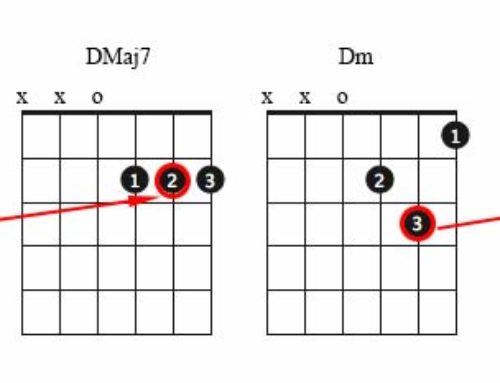Spicing up your RH arpeggio practice
Here is a simple way to both make your Right Hand arpeggio practice more interesting as well as making your arpeggios more even.
In all the examples of tablature and notation below I have put brackets around the note which should land on the beat. The chord is a static A7#11.
We have a tendency to see thumb strokes as the starting point of a repeating arpeggio pattern(for sure it is more common).
So we put the bass note on the beat and if there are 4 notes in the pattern we play 4 notes per beat as shown below.(Ex.1)
Ex.1
A nice change, and one which will make sure that your arpeggios develop evenly is to take a pattern of let’s say 4 notes but play it continuously with any arbitrary amount of notes per beat against a metronome. Let’s say 3 notes per beat in this case, ie triplets. (Ex.2)
Ex.2
Doing this will force you to maintain evenness between all digits as the thumb is no longer the only digit landing on the beat.
Similarly if the pattern has 6 notes we tend to either practice it with either 6 or 3 notes per beat. (Ex.3)
Ex.3
Here we take that pattern of 6 notes but play it with 4 notes per beat(Ex.4), then 5 notes per beat(Ex.5).
Ex.4
Ex.5
Another very easy thing to practice is to start the arpeggio pattern from a note other than the thumb and then continue the pattern as normal. For example in a PIMA arpeggio we could start the pattern on the beat with the M finger to give a MAPI pattern(Ex.6). Make sure the metronome beat coincides with your M finger in this case, don’t fall back into the habit of playing the beat with your thumb.
Ex.6
One last note, not only should the bracketed notes land on the beat but you should try to play them with extra volume or emphasis too.
Not only can these exercises help even out your arpeggio playing but they can be interesting compositional devices that can give you new ideas when playing against a beat or groove.
Have fun playing your arpeggios!










